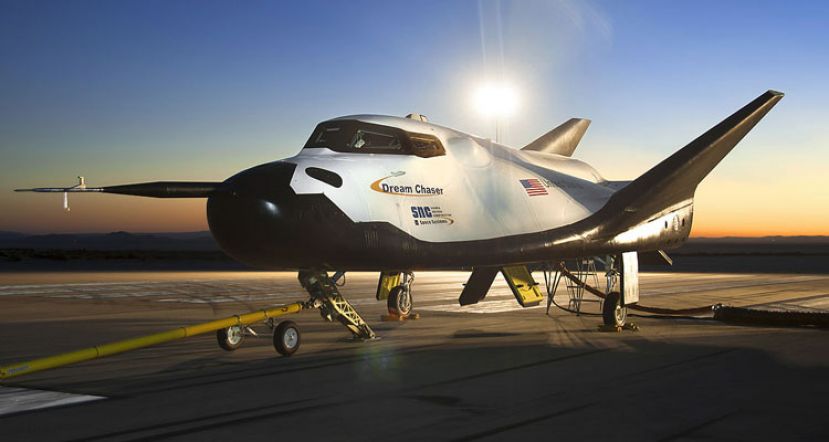Sierra Nevada Corporation Announces Successful Test of Dream Chaser Spacecraft
- Written by Admin TOA
- Published in Technology
Last week, Sierra Nevada Corporation (SNC) announced a successful atmospheric free-flight test of its Dream Chaser spacecraft, signaling the program is another achievement closer to orbital operations. The Dream Chaser is a reusable, multi-mission space utility vehicle capable of transportation services to and from low-Earth orbit, where the International Space Station resides, and is the only commercial, lifting-body vehicle capable of a runway landing. “The Dream Chaser flight test demonstrated excellent performance of the spacecraft’s aerodynamic design and the data shows that we are firmly on the path for safe, reliable orbital flight,” said Mark Sirangelo, corporate vice president of SNC’s Space System business area.
The first orbital vehicle is scheduled to go to the International Space Station as soon as 2020 for at least six missions as part of NASA’s Commercial Resupply Services 2 contract (CRS2). The missions will supply astronauts with much needed supplies and technical support elements and enable the gentle return of scientific experiments. The test vehicle was originally developed under the Commercial Crew Integrated Capabilities agreement (CCiCap). The test verified and validated the performance of the Dream Chaser spacecraft in the final approach and landing phase of flight, modeling a successful return from the space station.
SNC and NASA will evaluate information from the test, including the Dream Chaser aerodynamic and integrated system performance from 12,400 feet altitude through main landing gear touchdown, nose landing gear touchdown and final rollout to wheel-stop on the runway.
The Dream Chaser is based largely on a lifting body design developed by two universities in North Carolina: NASA’s HL-20 Personnel Launch System. The HL-20 began development in the late 1980s to provide an additional, lower cost crew transportation vehicle to the space shuttle. The HL-20 team began by creating a mold from large polystyrene foam blocks, then applying carbon fiber and fiberglass. The HL-20 program was canceled in 1993 but resurrected 10 years ago by the Sierra Nevada. In 2014, Lockheed Martin unveiled the new Dream Chaser orbital spacecraft composite airframe.
Combined with technology mastered at Lockheed Martin’s Skunk Works®, the SNC/Lockheed team is able to leverage its extensive experience in the areas of composites and advanced manufacturing to ensure the Dream Chaser orbital structure is fabricated, built and assembled using best practices. In addition, Lockheed Martin is applying advanced 3-D preform technology for joint assembly, thereby reducing overall part and tooling count while improving assembly and integration time. Through these improved processes, SNC and Lockheed Martin are able to improve the overall durability, weight efficiency and affordability of the spacecraft. (Evan Milberg / http://compositesmanufacturingmagazine.com)
Related items
- NASA Awards $45.5 Million for Private Moon Lander Work on Project Artemis
- Sierra Nevada Corporation Shows Off its Military Modified Aircraft that Are Ready for Missions
- Sierra Nevada Corporation CEO Invited to Join National Space Council Users’ Advisory Group
- Draper and Sierra Nevada Corporation Announce New Agreement for Space Missions
- Blackhawk Modifications Teams with Sierra Nevada Corporation to Certify the XP67A for the King Air 350ER
Latest from Admin TOA
- Fat Sal’s Italian Specialties Welcomes Customers in Bayville, NJ with a Renewed Concept
- FFD Wood LLC Delivers Custom Woodwork Solutions from Long Island
- A Tax Expert in the U.S. Tax World: An Interview with Samet Oynamıs
- Announcing the 2025 Edition of the 100 Most Influential Turkish Americans
- CEO Club New York Networking Night Stands Out with the Lamborghini Experience










